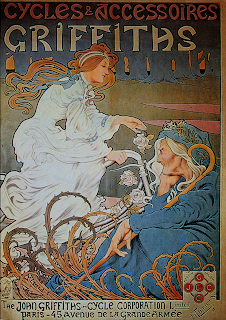Lessons For Real Patriots From the Sufferin’ Suffragettes
One hundred years ago today was the watershed 1913 women’s suffrage march in Washington, D.C. Plus, Friday is International Women’s Day. It’s therefore the perfect moment to reflect on the strategies and tactics of several generations of amazing women.
We all know that the suffragettes won in the end by securing the vote for U.S. women in 1920. But to stop with that fact is to miss the phenomenal, inspirational, often nail-biting and groundbreaking campaign that preceded their win, as well as the lessons they have for activists today.
Before telephones, before TV, before the web, these women mobilized masses of people in a widespread and colorful campaign. Their successful tactics continue to shape campaigns today, even if many organizers have no idea where those tactics originated. But no, this couldn’t possibly be because of the suffragettes’ gender and the utter lack of historical study on women’s issues until just a few decades ago… hmmm.
First of all, it was huge
Modern history often gives the impression that suffrage was given to women by men under pressure from some small group of marginalized female activists. Of course, there was a committed core organizing crew, but that account is far from what really went down.
In the late 1800s, moderate activists, such as those in the National American Woman Suffrage Association, chose to frame voting rights as a natural extension of what was then considered appropriate for women so as not to alienate potential supporters. Rather than diminishing men’s role, they argued that women needed the vote to fulfill their role as nurturers, holders of morality, keepers of culture, the heart of the household. As mothers and guardians who were considered to be more in touch with morality than men, women were positioned to call out corruption and hold the all-male politicians accountable. “Politics is housekeeping on a grand scale,” Jane Addams said at the time.
The mainstream nature of the wider movement is displayed in lines from a banner carried in the parade before the 1916 Republican National Convention: “For the safety of the Nation / To the Women Give the Vote / For the hand that Rocks the Cradle / Will Never Rock the Boat!” Do you think they really meant that, or was it just brilliant PR outreach? Either way, before SignOn.org, Twitter or Facebook, these women collected more than a million signatures in pen and ink, all through hand-to-hand contact, and displayed them as they marched down Fifth Avenue in New York with 20,000 supporters and an estimated half-million people in the crowd in 1917. That’s quite a petition-delivery!
....To push the vote in New York state in 1912, there was a 12-day, 170 mile “Hike to Albany”; the next year, the suffragist “Army of the Hudson” completed a 225-mile walk from New Jersey to Washington, D.C. These physical stunts were part of the ”new womanhood” that showcased active, fit women in the public sphere to undermine any thoughts of women’s inferiority, physically or politically. At the time, astute writers commented that this kind of public work generated millions of dollars in free publicity for the movement, as well as immense outreach opportunities.
The militant National Women’s Party took this another step further with the first-ever picket of the White House. The “Silent Sentinels” and their banners were present every day from Jan. 10, 1917, to June of 1919 — except on Sundays. More than a thousand women participated over this period. Many were arrested, were refused bail and served time in horrendous conditions of solitary confinement, where they experienced beatings and force-feeding when they went on hunger strikes. Outrage at the treatment of women activists in prison built sympathy for the suffragette cause. Also, the first arrests at the White House were eventually found illegal, which helped ensure the right to protest there to this day.
In the 19th century, political parades and pageants were common in U.S. communities — for local celebrations, temperance marches or presidential campaigns passing through town. Suffragists held parades as early as 1906, beginning in California. This practice reached its peak exactly a century ago with what The New York Times called “one of the most impressively beautiful spectacles ever staged in this country.” This 1913 Woman Suffrage Procession was reported to include nine bands, four mounted brigades, three heralds, about 24 floats and more than 5,000 marchers.
The march concluded at the Department of the Treasury steps with 100 women and children staging a vision of a shining future along with Justice, Liberty, Charity, Peace and Hope personified by women in flowing classical dresses and trumpets blaring. The now-famous image from this march is of a young beautiful woman in white robes on horseback, in a not-so-closeted, militant nod to Joan of Arc. Wow.
Lawyer Inez Boissevain, wearing white cape, seated on white horse at the National American Woman Suffrage Association parade on March 3, 1913, in Washington, D.C. (Wikipedia/George Grantham Bain Collection)Their spectrum of tactics included hotter actions, too. At one point in 1919, President Wilson was burnt in effigy in front of the White House, pitting the petticoats against the bluecoats. Wildly spewing fire extinguishers were unable to prevent the burning of the four-foot-tall cardboard Wilson. (There were about 50 arrests that day.) The suffragettes used flames again when they set “watchfires” outside the New York City opera house while Wilson was speaking there. Activists transcribed his words as he spoke them and then publicly burned the paper in public fires outside — thus condemning the hypocrisy of his words about international freedom while women were denied suffrage at home. These protests kindled more support for the women, who were steadfast, innovative and organized. They left the police looking disorganized and foolish, along with anti-suffrage minions.
Many of the media stunts were timed just right — famously, President-elect Wilson arrived in Washington the day before he was to be inaugurated to empty streets, as the masses in town all were drawn to the Woman Suffrage Procession. Of course, that meant that there were many hostile observers who had come just for the next day’s inauguration — about 100 marchers landed in the hospital — but the riotous swarm and the resulting publicity led to more momentum for the campaign.
It worked on many levels
Generations of American suffragettes were brave, tenacious, dedicated and incredibly talented nonviolent warriors and leaders — from Elizabeth Cady Stanton to Alice Paul. Their tactics and strategies have become such an integral part of our nation’s repertoire of civil resistance that we often take them for granted.
Not only were the events innovative, courageous and spectacular, but they were intentionally executed to get attention in the media of the day — newspaper and radio, as well as early motion pictures. Some participants in the 1917 New York march recorded one-minute speeches on early Kinetophone cylinder recordings that were then played to audiences in Vaudeville houses — an ancestor of YouTube, perhaps? Ubiquitous media coverage, whether positive or negative, succeeded in helping educate and convert the public into supporters of women’s suffrage.
This list of suffragette activities and accomplishments could go on and on. For instance, they were not afraid to lobby (which they did for decades, alongside more militant actions), and they didn’t shy from political campaigns, either. They were not only the first to picket the White House, but they were also the first to hold a funeral as both a political event and a memorial in the Capitol building — to Inez Millholland (famous for her role in leading the 1913 parade on the white horse). And, finally, they were well aware that effective activism meant making the personal political; the straw that finally broke the camel’s back and enabled the passage of the 19th Amendment, granting suffrage to America’s women, was the vote cast by a young lawmaker swayed by his mother’s note: “Hurray and vote for suffrage… don’t forget to be a good boy!”
Progress doesn't just happen because you write a blog or even have your own radio program or a propaganda channel dedicated to conservatism like Fox News and CNN. Progress can be frustratingly slow. Never give up, even if you only make a tiny step forward in a year. That is a fight won for the next American and a step further down the road to America living up to it's ideals and not down to the base malevolence of conservatism.




No comments:
Post a Comment
Note: Only a member of this blog may post a comment.